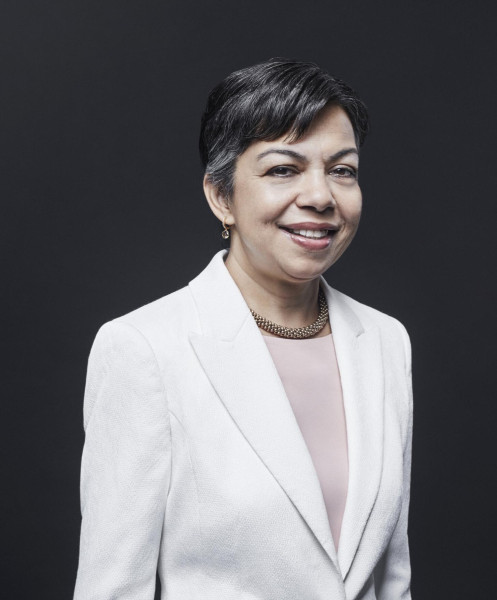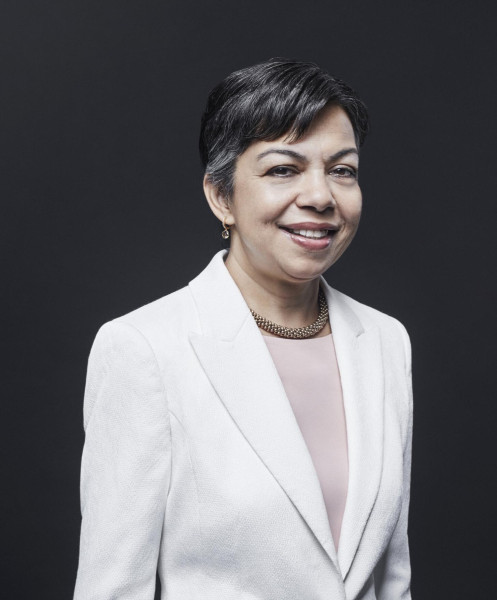A key driver for sustainable business
Covestro is on a mission to reimagine the chemical industry by embracing circularity. This means finding smarter ways to recycle, switching to renewable raw materials, and creating products that reduce environmental impact. But achieving circularity at scale is a complex challenge. One of the most effective tools we have for making real progress — today — is the mass balance approach.
To explain why mass balancing matters and how it creates value, Chief Commercial Officer, Sucheta Govil, and Andreas Binder, Head of Sustainability Transformation and Business Building share insights on the newly released position paper on the topic. Making Mass Balancing work is a key driver for sustainable business.
Why is mass balancing so important for Covestro and the industry?
 Sucheta Govil, Chief Commercial Officer: If we want to move away from fossil resources and truly become circular, we need a system that works within our existing infrastructure. That’s what mass balancing offers. It allows us to gradually integrate mass balance raw materials, bio-based or recycled materials are integrated in our supply chain production chain — without having to redesign our plants from scratch. Also, it works the same way for products with a reduced carbon footprint, for example so called ‘blue’ products, that benefit from carbon capture and storage (CCS).
Sucheta Govil, Chief Commercial Officer: If we want to move away from fossil resources and truly become circular, we need a system that works within our existing infrastructure. That’s what mass balancing offers. It allows us to gradually integrate mass balance raw materials, bio-based or recycled materials are integrated in our supply chain production chain — without having to redesign our plants from scratch. Also, it works the same way for products with a reduced carbon footprint, for example so called ‘blue’ products, that benefit from carbon capture and storage (CCS).
Here’s the key point: mass balancing tracks the amount of alternative raw materials used in production and reliably attributes them to final products. So, as materials are consumed during production, we can still account for how much attributed content is included.
This method helps the entire value chain — suppliers, manufacturers, and customers — taking real, measurable steps toward circularity. That’s why we’re pushing for a unified, industry-wide approach. Our new position paper breaks down how mass balancing works and what’s needed to make it the global standard. Plus, it addresses further stakeholder groups who are crucial: policy and decision makers and the general public. We don't just need the technical explanation, but also a general understanding of the topic. That's because we need to inform, explain and guide.
How is this approach already helping Covestro’s business?
Sucheta Govil: We’re already seeing success with our CQ (Circular Intelligence) label. These products represent at least 25 to 90 percent alternative, non-fossil raw materials, either as components or through mass balance methodology. They help customers reduce carbon emissions, utilize waste, and improve their Scope 3 footprint. This creates a strong business case: we’re offering innovative, low-footprint materials that align with our customers’ own sustainability goals, without large investments.
But to scale this further, we need more than just good products. We need a shared understanding of how to measure and communicate these benefits — across industries and regions. That’s why our position paper is so important: it’s about creating clarity, transparency, and trust.
What makes the approach from Covestro to mass balancing credible and trustworthy?
 Andreas Binder, Head of Sustainability Transformation & Business Building: Transparency is non-negotiable. We work with globally recognized certifications like ISCC PLUS and regularly undergo independent audits. More importantly, we ensure chemical connectivity — meaning that only the raw materials that actually go through our chemical processes are counted in the product's attributed content.
Andreas Binder, Head of Sustainability Transformation & Business Building: Transparency is non-negotiable. We work with globally recognized certifications like ISCC PLUS and regularly undergo independent audits. More importantly, we ensure chemical connectivity — meaning that only the raw materials that actually go through our chemical processes are counted in the product's attributed content.
This isn’t just about tracking numbers — it’s about integrity. Chemical connectivity makes sure we don’t overstate our sustainability claims. When we say a product has attributed alternative raw material content, we can prove it, both scientifically and operationally.
This is why this position paper is necessary for us: to explain the use for various stakeholder groups – those who advocate this from governmental perspective, but also for our customers and partners. Here, the outline is: how can we add value for the entire value chain, because only then we can make money with sustainable solutions. That is by the way what we see many regulators are requesting.
How does this approach create value for customers — and for Covestro?
Mass balancing isn’t just a technical solution — it’s a business enabler. Our customers are under pressure to decarbonize and reduce their environmental footprint. We help them do that with verified, lower-impact materials that perform just like their fossil-based counterparts. This requires neither investments nor technical modifications and with implementing ISCC PLUS procedures they can reliably prove their claims.
We’re also working across the value chain to explain this better. Our goal is to show how mass balancing helps everyone — from policymakers and manufacturers to end consumers — contribute to a more sustainable, a more circular economy. The more clearly we can communicate this, the more impact we can have together.
And would you wish for looking at the next steps?
 Sucheta Govil: The way to a circular economy is a marathon, we stated this several times. It is also complex, if we look at making more sustainable products, using more sustainable technologies. We sometimes need to take the time and explain this to our stakeholder groups. This is why we created the position paper: to provide a clear rationale, show the shared benefits, and drive a broader shift. Because when we align across industries, we can move faster — and further — toward a sustainable future. Use it to enhance the dialogue between our customers and us!
Sucheta Govil: The way to a circular economy is a marathon, we stated this several times. It is also complex, if we look at making more sustainable products, using more sustainable technologies. We sometimes need to take the time and explain this to our stakeholder groups. This is why we created the position paper: to provide a clear rationale, show the shared benefits, and drive a broader shift. Because when we align across industries, we can move faster — and further — toward a sustainable future. Use it to enhance the dialogue between our customers and us!
Here you can find more information in our position paper.
Copyright of all images: © Covestro








